The project
For a long time, scientists have been interested in understanding the evolution of phytopathogen resistance to utilize this in plant breeding.
While genome sequencing has unraveled the long-term evolution of resistance genes, the diversity within and between closely related species remains unclear. The CucuR-gene project integrates genomic and bioinformatic approaches to analyze Cucurbita R-gene diversity across nine Cucurbita taxa in a geographical context, offering a new perspective on plant immunity evolution.
Leveraging genomic resources, it investigates evolutionary mechanisms, plant-pathogen interactions, and the impact of repeated sequences on R-gene variability.

CucuR-gene is a bilateral cooperation of the Department of Agricultural Sciences of the University of Naples University of Naples “Federico II” (UNINA) and the Department of Agriculture, Food and Environment of the University of Pisa (UNIPI) founded by Italian Ministry of University and Research on behalf of European Union Next Generation EU program.
Key persons and contact:
Prof. Giuseppe Andolfo (CucuR-gene Principal Investigator) Associate Professor in plant genetics and genomics at the Department of Agricultural Sciences of the University of Naples “Federico II”.
https://www.docenti.unina.it/giuseppe.andolfo
Dr. Flavia Mascagni (CucuR-gene Substitute Principal Investigator) Senior researcher in plant genetics, genomics and bioinformatics at the Department of Agriculture, Food and Environment of
the University of Pisa.
Objectives
One of the major challenges affecting cucurbit production globally, zucchini included, is the powdery mildew (PM) disease, caused by ascomycete biotrophic fungi belonging to the order Erysiphales.

Podosphaera xanthii stands out as the primary causal agent of cucurbit PM, significantly diminishing fruit yield and quality. Chemical control measures for PM are often expensive and raise concerns related to environmental and food safety. Consequently, the identification and utilization of genetic resistance to PM have become crucial areas of focus in agricultural research.
Pathogen perception is primarily mediated by the direct or indirect recognition of effectors through plant disease-resistance (R) proteins. A major class of R genes encodes nucleotide-binding site (NB) and leucinerich repeat (LRR) proteins (NB-LRR).
Additionally, it is becoming evident that many NB-LRR-mediated immune responses require the presence and activity of "helper" NB-LRRs, which serve as downstream signaling centers for a variety of "sensor" NB-LRRs. In this cooperative reaction, sensors detect effectors, and helpers play a crucial role in translating effector perception into immune activation. Helpers function as central points for controlling signal transduction and/or amplification levels, empowering the innate immunity network. Recently, an NB-LRR helper gene, Pm-0, imparting resistance to PM, was identified in a zucchini-resistant genotype
Most R-genes tend to be physically clustered in plant genomes, forming gene clusters, also known as multiple-copy R loci, contributing to the diversification of plant defense arsenals. These R-gene clusters have been associated with transposable elements (TEs), which may be responsible for generating further variation at these complexes. TEs are widely recognized as catalysts of genetic innovations by directly mediating sequence changes. In plants, TEs play a pivotal role in genome plasticity in response
to environmental stresses, inducing gene alterations that can affect resistance gene regulation and diversification, potentially providing a selective advantage for the host genome.
The application of new omic technologies holds promise for addressing these knowledge gaps.
Objective 1: The first objective is to generate a comprehensive data set of de novo assembled NB-LRRs throughout the mesophytes. This will provide insights into the general diversity of the gene family and the variation within and between species.
Objective 2: The second objective is to establish the evolutionary history of the NB-LRRs previously identified. This will provide insights into the diversity of well-characterized R-gene homologs and form the basis to discover Pm-0 homologs in analyzed Cucurbita taxa. Finally, we hypothesize that not all Pm-0 alleles and/or homologs are equally functional and that recombinations and mutations affect functionality in different taxa in different ways. This objective aims to find new functionally wellcharacterized R-gene variants that can be used by cucurbit breeders.
Objective 3: Despite the importance of plant-PM interactions in agricultural settings, poor information is available on molecular events ultimately leading to susceptibility and resistance. The use of modern –omic technologies might have a remarkable impact in filling this knowledge gap. The third objective is to provide significant insights on molecular mechanisms of pathogenesis.

